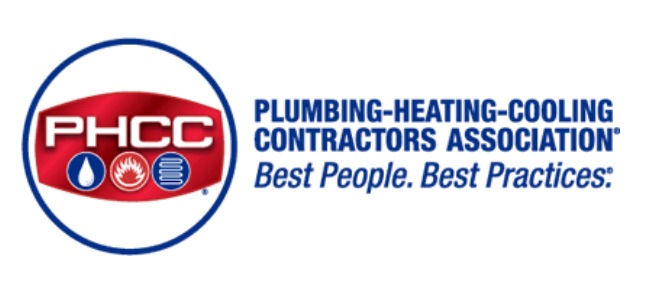Outdoor air pollution is spurred by burning fossil fuel, industrial exhaust gases, and vehicle emissions, among other factors. The increasing levels of air pollution outdoors are disturbing enough to make you want to remain inside your house as much as possible. However, even your indoor air might not be as healthy and clean as you would like to believe. According to EPA, the air inside a home can be five times more contaminated than outside air.
Some of the causes of pollution inside homes include carbon monoxide (CO) emissions from gas stoves and heating systems, asbestos, cigarette smoke, mold, volatile organic compounds or VOCs, and radon. VOCs are present in household products such as air fresheners, pesticides, paint, adhesives, carpeting, wood preservatives, and disinfectants. Dust also contributes significantly to poor air quality. Some chemicals can cling to dust particles, making them more harmful to your health when you breathe.
According to statistics, people spend approximately 90% of their time indoors, making us extremely vulnerable to these air contaminants. Therefore, it’s important to ensure indoor air is clean, particularly during the winter when many people like keeping their doors and windows tightly shut to keep out cold air. Here are eight effective ways you can use to keep your indoor air clean and healthy.
1. Buy an Air Purifier
Using an air purifier is one of the best and most effective ways to filter and eliminate contaminants from your indoor air. As you shop for a purifying system, look for a unit with a HEPA filter for maximum efficacy. HEPA air filters are usually carbon activated, making them exceptionally useful in eliminating gases, odors, and chemicals from the air. Due to technological advancements, some air purifying units can capture and easily kill small pathogens like viruses and bacteria while eliminating smoke, pet dander, and other contaminants.
You can also find other modern systems that purify indoor air a couple of times every hour, keeping your air cleaner during the cold season. As you purchase an air purification system, ensure its technology can do its job effectively. Therefore, you should consider unit sensitivity, room sizes, and home pollutant levels.
2. Groom Pets Regularly
Pets shed dead skin cells, known as pet dander, a common culprit behind air pollution inside a home. Your pets can also track in dirt, debris, and other allergens in their fur and paws, polluting your indoor air. If you have pets, bathe and groom them regularly to prevent them from spreading contaminants in your living space. Also, brush their coats regularly and, if possible, keep them off your furniture. Don’t forget to clean their bedding using warm water.
3. Control the Sources of Pollution
Many people keep their doors and windows closed during winter, limiting airflow into their homes. Opening some windows can be a good way to enhance air circulation. Unfortunately, that’s not possible during the cold months. As a result, indoor contaminants may get trapped inside your living space and continue accumulating. And some of the contaminants can easily trigger respiratory issues like asthma.
The easiest way to deal with this problem is by controlling the sources of pollution. For instance, you can use carpets and rugs to trap pet urine and fur. Placing rugs or an old towel by your doors can also prevent pets from bringing debris and dirt indoors as they enter the house. High-traffic spots on your property can also contribute to the spread of allergens in your home. To prevent that, have a dedicated area in your house, particularly close to the entrance, where everyone can remove and leave their shoes and luggage before entering your home.
4. Clean Your HVAC Ductwork
Like air purifiers, HVAC systems are part of the frontline defense against indoor air contaminants. To ensure your home’s HVAC unit works properly, you should have it regularly maintained by a professional. That’s important, especially before the cold weather kicks in. After that, heating systems tend to run continuously.
To minimize airborne contaminants, have an HVAC technician inspect your system. Clogged air filters significantly contribute to pollutants and allergens in the air. The professional will change the unit filters if they’re dirty. In addition, have your home’s ductwork inspected. With time, dirt, dust, and debris might accumulate in the ducts, leading to low air quality. Have the ducts professionally cleaned to enhance air quality, and ensure they’re properly sealed.
5. Keep the House Clean
Cleaning your space helps reduce dust, pollen, mold, pet dander, and other air contaminants. To keep your living space clean, wash your curtains, bedding, and all other items that attract allergens and contaminants. Doing your laundry every day can also minimize indoor air pollutants.
After cleaning your curtains and bedding, vacuum your floor rugs, carpets, and mats at least twice a week. The pet fur, dust, and pollen trapped in your floor coverings can make you and your family members sneeze or cough. It can also aggravate symptoms in individuals with allergies, asthma, and respiratory issues.
6. Avoid Using Toxic Products
Many commercial household cleaning and personal-care products contain harmful chemicals that impact air quality and can even trigger allergies. The chemical residues usually linger in the air when you use these products, especially during the cold season. That’s due to the restricted flow of fresh and clean air.
Industrial cleaners may leave some chemical deposits that negatively impact air quality. If possible, utilize natural household cleaners like essential oils, vinegar, lemon, or baking soda. Natural cleaning solutions are nontoxic, healthier, and fresher. If you have to use commercial cleaning solutions, ensure you have adequate ventilation during and after the cleaning process.
7. Monitor Humidity Levels
According to experts, humidity levels should range between 30% and 50% all year round. Your indoor air can become drier during the cold months, causing discomfort and illnesses. To increase humidity levels, you can invest in a good humidifier. A fan-powered humidifier can help blow moisture vapor into the heating ductwork to minimize static electricity and increase moisture levels. This way, your household can breathe easier and more comfortably, preventing issues like dry throat and nasal passages. Besides, adding humidity controls dust mites.
8. Grow Indoor Plants
Growing indoor plants can also enhance air quality. Many research studies indicate that houseplants boost air quality by absorbing harmful pathogens in your air. Houseplants work effectively, particularly in rooms and areas with restricted or no airflow. Although houseplants may be slower than air purifying systems when it comes to air-purifying strengths, they have other incredible benefits. For instance, indoor plants are more therapeutic and cost-effective than air purifiers.
However, you’ll need a specific number of plants to enjoy air quality benefits. Experts recommend having two to three plants for every 100 square feet of space. Some common houseplants you can consider for enhancing air quality include Areca palm, the Money plant, and Chinese evergreens.
Rely on the Air Quality Experts
Good air quality offers numerous benefits like better concentration, quality sleep, allergen-free space, reduced odors, balanced humidity, and improved comfort. To realize these benefits, groom your pets frequently, clean your house, monitor humidity levels, clean your HVAC ductwork, purchase an air purifier, and grow some houseplants.
If you are experiencing air quality problems, reach out to our team. Our air quality experts can inspect your property, identify the sources of the problem and give necessary recommendations to improve your Sterling, VA, home’s interior atmosphere. We also specialize in duct cleaning, water heaters, heating and cooling equipment, and gas line services. Count on our professionals for testing, diagnosis, installation, maintenance, and repair, and contact us at Meade’s Heating and Air today for reliable air quality solutions.




